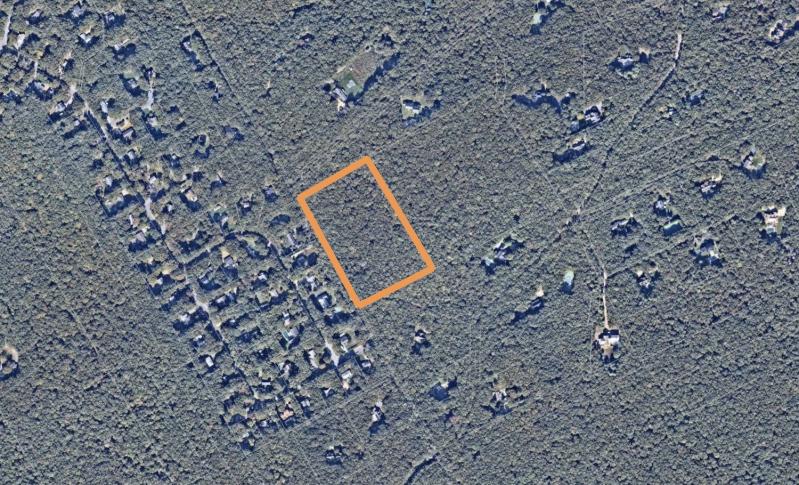A strong turnout from East Hampton residents dubious about plans to build affordable housing in their neighborhoods has at least temporarily derailed the town’s efforts to purchase four parcels of land from Suffolk County.
In Riverhead on April 2, the Suffolk County Economic Development, Planning, and Housing Committee tabled a resolution that would have authorized the sale, at below market rates, through its 72H program, which allows the county to seize parcels whose owners haven’t paid back taxes and then resell them, with the restriction that they be used only for open space or affordable housing.
Two parcels brought out the bulk of residents: a 5.8-acre lot on Two Holes of Water Road in East Hampton and a 7.7-acre plot abutting preserved land off Town Line Road, near Sag Harbor.
Last December, upon learning they were available, the East Hampton Town Board rushed through a resolution authorizing their purchase for only $100,000 each, obviously a good deal.
The public auction was held in November 2024, just shy of a month before the town passed its resolution to purchase the land.
“I’m the winning bidder of the two properties in question,” said Doug Cavallo. “We are paying eight times the amount that East Hampton would pay for each of these properties. The auction system is somewhat flawed.”
In a phone call after the meeting, East Hampton Town Councilman David Lys said, “This was a very fair process,” and said the county always reserved the right to sell the parcels to the town, despite the results of the public auction. “There is a mutual benefit to the county and town to try and produce more affordable housing.”
Based on the recently updated pertinent code sections, it’s possible for either lot to hold up to 60 units for senior citizens, provided a wastewater treatment plant is included in their development. However, Eric Schantz, the director of housing for the town when the town board authorized their purchase, said it was more likely that anywhere from five to 15 affordable houses would be built on each parcel.
Mr. Lys made an impassioned plea to the legislative committee to allow the town to purchase the land last week.
“Purchase of the parcels is a meaningful and necessary step to address the severe shortage of affordable housing in East Hampton,” he said. “Public comment will be sought and mandatory.” He emphasized that development designs on either lot had not been contemplated yet.
“We did receive a lot of correspondence from residents that were alarmed to learn of some 60 multifamily units that include a sewage treatment plant, but that’s not the idea I have gotten from the Town of East Hampton. What is the actual intention of the town?” James Mazzarella, a Suffolk County legislator and chairman of the committee, asked Mr. Lys.
“No decision has been made on the final design of this property,” he said. “We have done maximum and minimum calculations, but the initial discussion is to make sure that the property fits within the character of the neighborhood. We’re not necessarily looking for a large development. Home ownership through a small subdivision is appropriate.”
Legislator Trish Bergin floated the idea of covenanting a restriction on the land that would prevent multifamily units.
“Even if we built one house, it’s more than we have right now,” said Mr. Lys.
“We spend a lot of time worrying about maintaining the quality of our drinking water,” said Legislator Steve Englebright, noting that both parcels were in water recharge overlay districts.
“We believe these properties can be developed even in these zones to control runoff and also using nitrogen reducing systems,” said Mr. Lys. “A traditional septic system could not go in there. That’s in our town code.”
Neighbors weren’t impressed, with 15 speaking out against the potential sale. The majority thought affordable housing wasn’t right in the area, citing environmental and safety concerns.

“I have deep concerns about our water quality and the influx of so many people in one small area on it, along with the impact to open space on the greenbelt,” said Kryn Olsen, a Sag Harbor resident. “I agree with housing, but I think there are places that this would not impact our aquifer so immensely.”
“I don’t understand how you can turn the property over when you don’t even know what’s going to be on it,” said Alan Feldman, a resident of Two Holes of Water Road.
Timothy Blaquiere, a resident of Town Line Road, argued that the land, currently zoned for a single-family residence, should be sold to a private citizen for that purpose, or preserved. Getting to the land from the East Hampton side requires driving on a dirt road, he said. “Development of multifamily there is a really bad idea.”
“I am the reason why Suffolk County owns this property,” said Richard Whalen, an East Hampton attorney. He explained that in the 1980s, as a member of the East Hampton Trails Preservation Society, he was involved with laying out the Paumanok Path. “The best way to preserve this land was to put it on the tax rolls,” but there was no known owner. Obviously then, no one paid taxes and the land became county land. “This land should be preserved.”
Legislator Englebright took issue with the way the State Environmental Review Act process was undertaken. The land transfer was listed as a Type 2 action, which means there would be no significant environmental impact. “I see a Type 2 action as, in a critical groundwater recharge area, where the groundwater does not even go to bedrock, as really off the wall,” he said.
After the meeting, Councilman Lys wasn’t entirely put off. “That was a wise move from the county to dig into the details based on the amount of public comment. That’s good government there. We’ve requested these properties in the past. This is the closest we’ve come.”



